Authors & editors
ANU Press has collaborated with a diverse range of authors and editors across a wide variety of academic disciplines. Browse the ANU Press collection by author or editor.
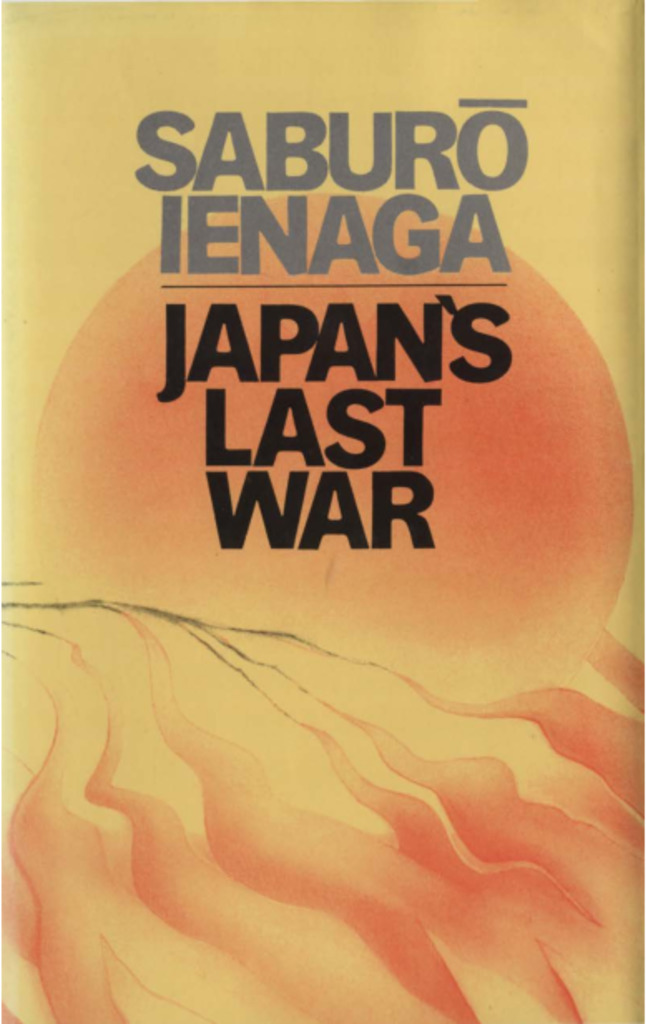
Japan's last war: World War II and the Japanese, 1931-1945 »
Publication date: 1979
Japan's surrender to the Allies on 15th August 1945 ended 15 years of military adventure into China, South-East Asia and the Pacific islands. How and why Japan waged war from 1931 to 1945 and what life was like for the Japanese people are the subjects of this book. Sabur{u014D} lenaga tells English readers for the first time the Japanese story of the Second World War. This book is far more than the history of the great battles that raged from China to the remote regions of the Pacific. It is also an account of what it was like to live under an all-pervasive state system. Using popular songs, private diaries and personal letters, and drawing on his own experience, the author describes the misery of the war for the Japanese and for the peoples they conquered. He shows how a nation was educated in fanatical patriotism and the barbarism and brutality that were its consequence. Sabur{u014D} lenaga has written eloquently of the wretchedness of war, and a compassionate, but highly critical, view of a people consumed by total conflict.
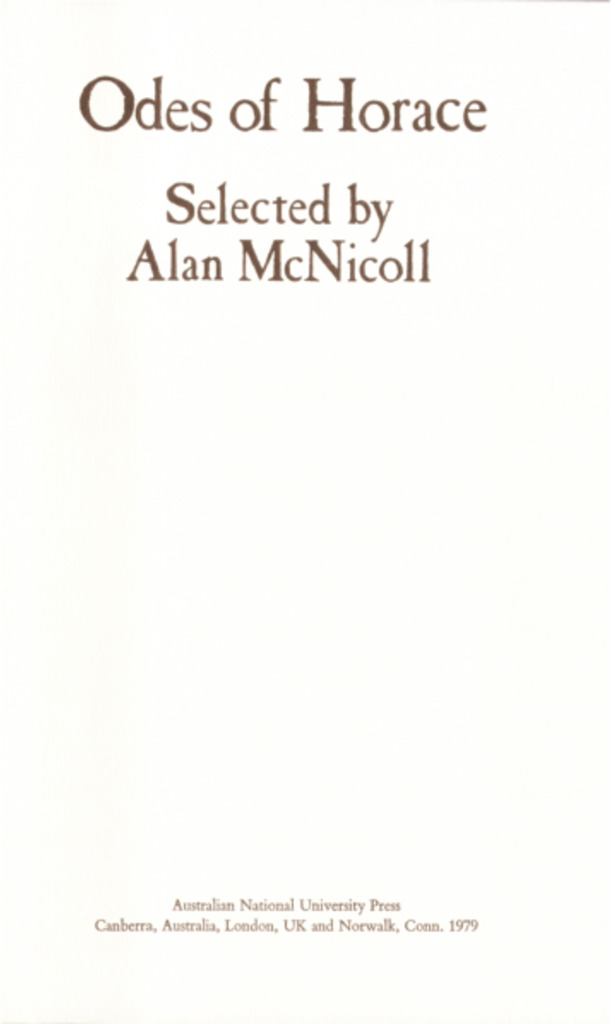
Odes of Horace »
Publication date: 1979
Published Press Archives http://press.anu.edu.au/node/2913 1885_116876.jpg ANU Press Odes of Horace Saturday, 18 August, 1979 Not available Archive Scholarly Information Services Horace
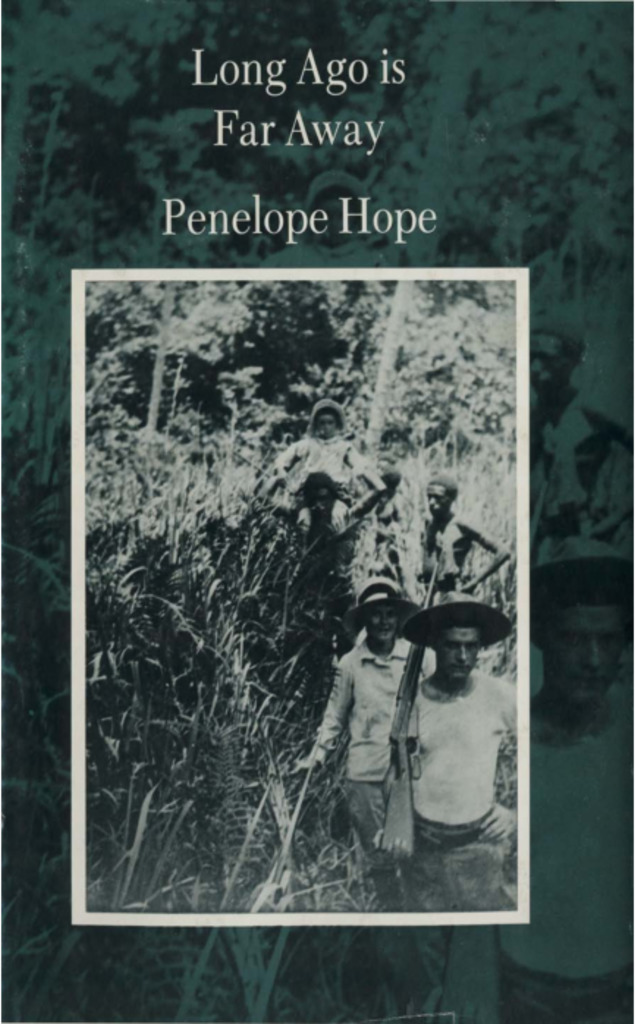
Long ago is far away: accounts of the early exploration and settlement of the Papuan Gulf area »
Publication date: 1979
There are moments when I know just how that coelacanth felt when the African fisherman dragged her up into a power boat. This book is an attempt to present the activities and motivations of a generation whose writings are fossilised in archives. I hoped, because I was influenced by that generation, that I could interpret their efforts in such a way that people here and now would at least sympathise with their strivings even though they believe them to be misguided. That is what I have been telling myself anyway. In fact I have enjoyed myself collecting the records of people who happened to come to the rivers that flow into the Gulf of Papua: from the visit of the Fly in 1845 up until 1929 when government influence appeared to have been established and the world depression was thwarting those who had hoped to develop the country by European standards.
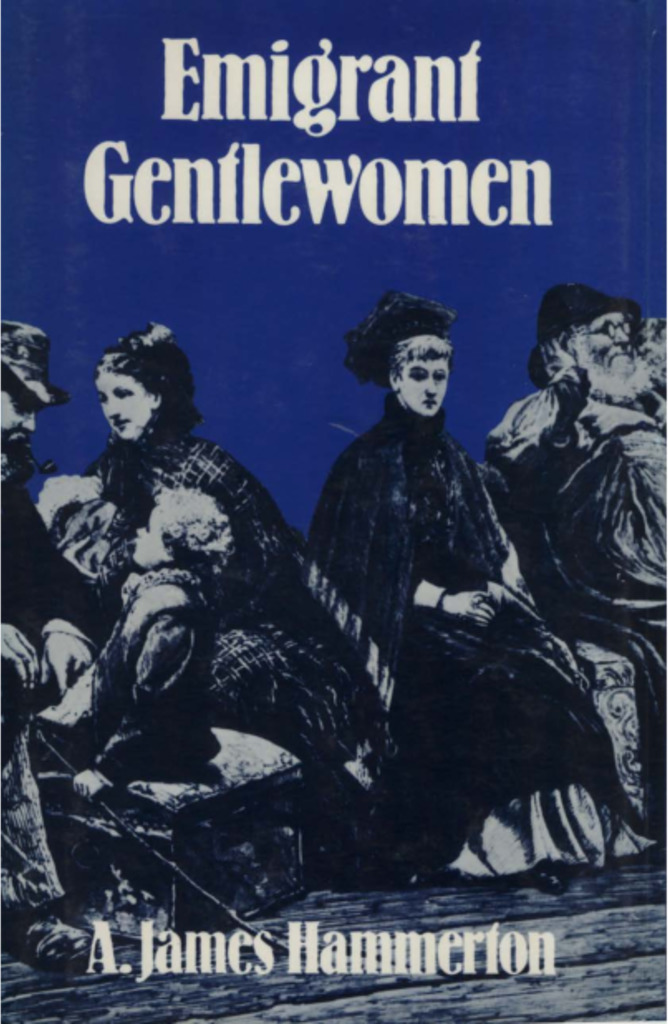
Emigrant gentlewomen: genteel poverty and female emigration, 1830-1914 »
Publication date: 1979
Despite much recent revisionist analysis of the traditional stereotypes of Victorian women, the downtrodden and helpless {u2018}distressed gentlewoman{u2019} has survived or evaded historical scrutiny. This book examines the distressed gentle woman stereotype, primarily through a study of the experience of emigration among single middle-class women between 1830 and 1914. Based largely on a study of government and philanthropic emigration projects, it argues that the image of the downtrodden resident governess does inadequate justice to Victorian middle-class women{u2019}s responses to the experience of economic and social decline and to insufficient female employment opportunities. Although powerful factors operated to discourage distressed gentlewomen from risking the hardships of emigration, research among emigrants{u2019} letters and other records of female emigration societies from Australia, Canada, New Zealand and South Africa, shows that middle-class women without economic resources persistently took advantage of the invariably meagre facilities enabling them to emigrate. Once out of Britain they proved to be remarkably adaptable emigrants. Instead of the helpless simpering gentility normally associated with the stereotype, women showed a willingness to risk their gentility by undertaking work which would have been unthinkable at home. Their experience raises wider questions about the potential for resourcefulness and adaptability among Victorian women and reveals qualities which are inconsistent with the traditional view of woman as victim.
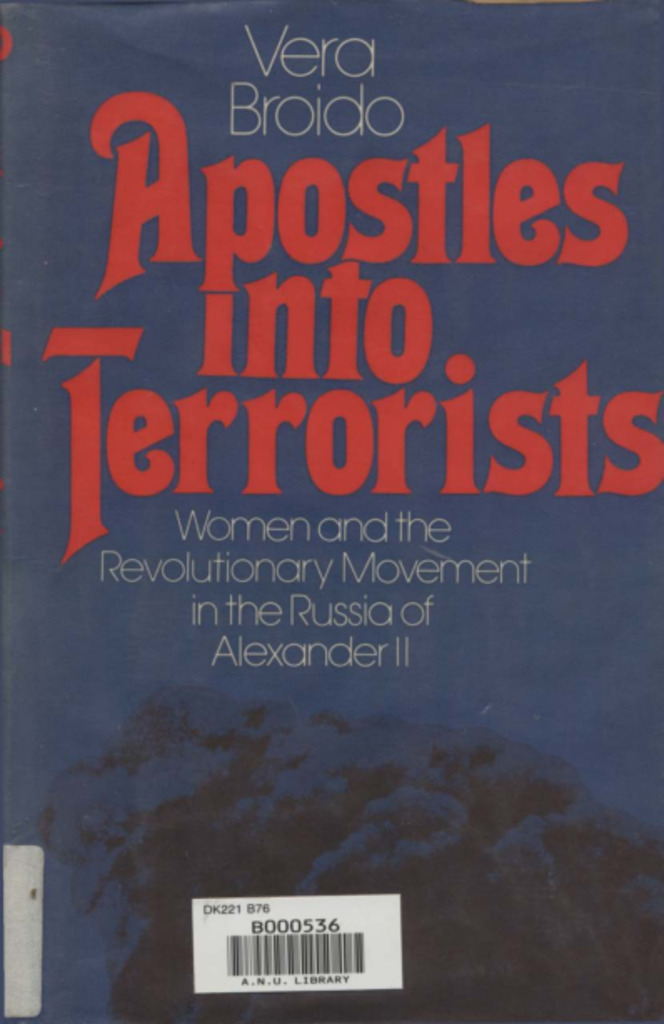
Apostles into terrorists: women and the revolutionary movement in the Russia of Alexander II »
Publication date: 1979
Russia in the nineteenth century was an extremely backward, authoritarian society. The tsars, resolved to maintain their iron grip on the Russian people, had virtually strangled the economy, subverted religious and cultural institutions to their own ends, and drained the people of their spirit. Yet from this repressed society emerged a remarkable group of women, enlightened in their thinking, determined in their fight for equal justice, dedicated to humanist and feminist principles, who made a major contribution to the revolutionary movement of their time. In Apostles into Terrorists Vera Broido tells the story of Sofya Bardina, Vera Figner, Vera Zasulich, and many other who participated in the revolutionary movement between 1860 and 1880. They were populists who started out as peaceful propagandists and preachers among workers and peasants but who gradually turned to political militancy, terrorism, and eventually regicide. As the author shows, they were also pioneers of female emancipation who supported feminist demands for higher education and economic independence for women. By choosing to enter the general political struggle to liberate the whole intellectual class, they escaped the narrow confines of pure feminism and won for themselves complete equality with their male comrades. In this clear eyed, compassionate chronicle Vera Boirdo shows how these women, in their efforts to educate themselves, to work among the peasants and organize them for revolutionary activity, finally arrived at their inevitable response to the government's repressive and degrading policies: terrorism and assassination. And she shows how women - probably for the first time in history- came to play a political role equal to that of men. Born into a Russian revolutionary family, personally acquainted with many women revolutionaries, and steeped as she is in Russian literature and memoirs. Ms. Broido is uniquely suited to deal with her subject. She has produced not only a definitive scholarly work, but an extraordinarily vivid portrait of Russian life in all its dimensions, from its political and economic aspects to the social, cultural, and - most important- human facets. Against this authentic background her heroines come to life not merely as historical figures but as vital, recognizable individuals.
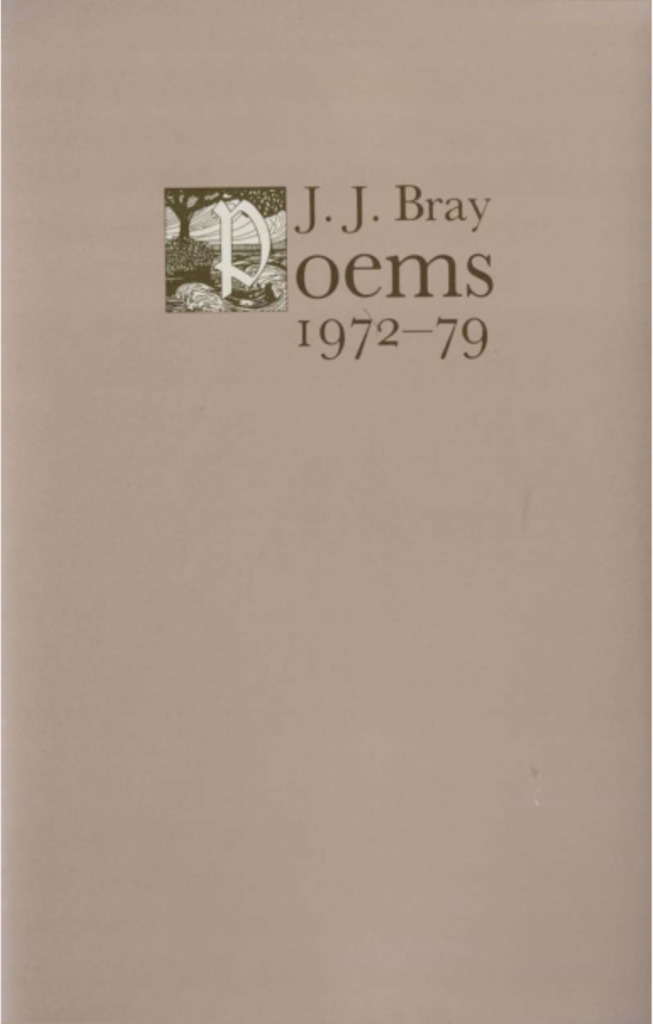
Poems 1972-79 »
Publication date: 1979
J. J. Bray - whose third collection of poetry this is- was born and educated in Adelaide. After a distinguished career at the South Australian Bar he was Chief Justice of South Australia from 1967 to 1978 and in 1968 became Chancellor of the University of Adelaide. He is now retired apart from his University appointment and a post on the Libraries Board of South Australia. J. J. Bray began to write poetry seriously in the 1950s and acknowledges the important influence of the late C.J. Jury on his work. Bray's long standing affection for the classics is evident in this collection. His two previous books of poems, Poems and Poems 1961-1971, were published in 1962 and 1972. He is also the author of three verse plays.
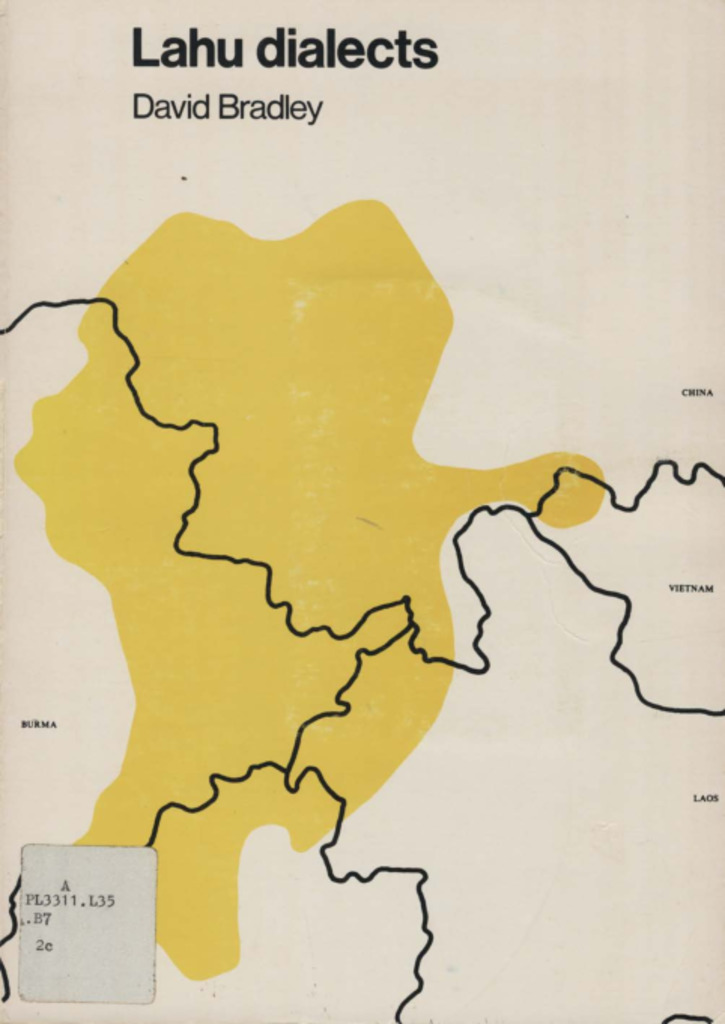
Lahu dialects »
Publication date: 1979
Published Press Archives http://press.anu.edu.au/node/3467 1885_114823.jpg ANU Press Lahu dialects Saturday, 18 August, 1979 Not available Archive Scholarly Information Services Bradley, David
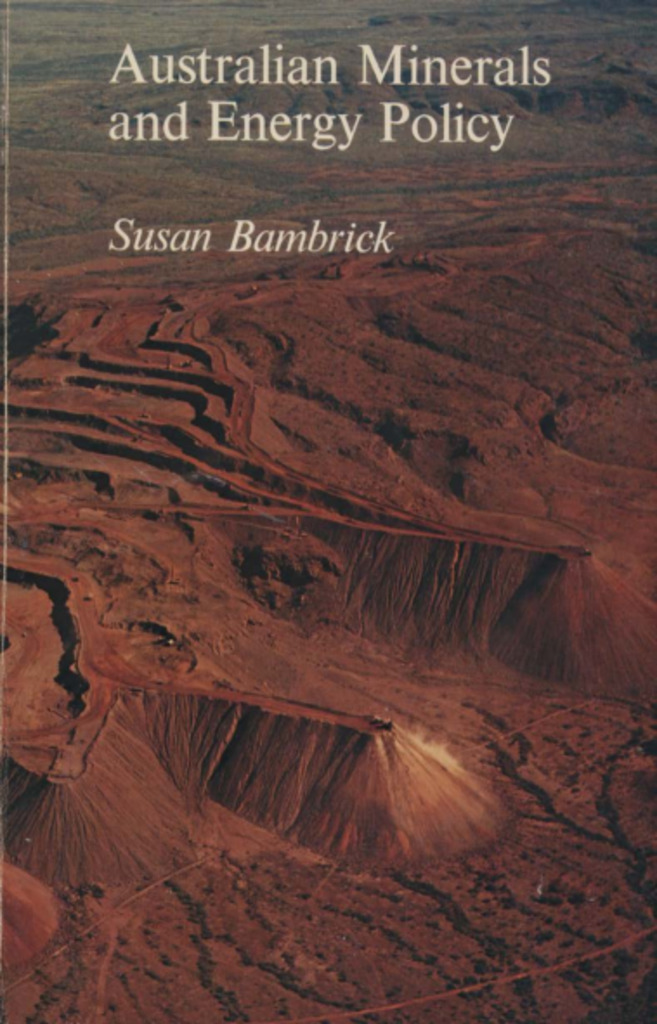
Australian minerals and energy policy »
Publication date: 1979
The 1960s saw a boom in the Australian mining industry unparalleled since the gold rushes of last century. The seventies have, by comparison been less dramatic, but the world concern with energy offers the prospect of another boom. This book examines the policy problems with which the minerals and energy sector confronts Australian governments - such as taxation, environment protection, Aboriginal land rights, foreign investment, the development of an integrated energy policy, the encouragement of local processing of minerals before export, and the role of government. Clearly and objectively this book puts into perspective the operations and the importance of the mining and energy sector, operations that have frequently been the subject of heated controversy. It is essential reading for the intelligent reader seeking a balanced view of this important industry.
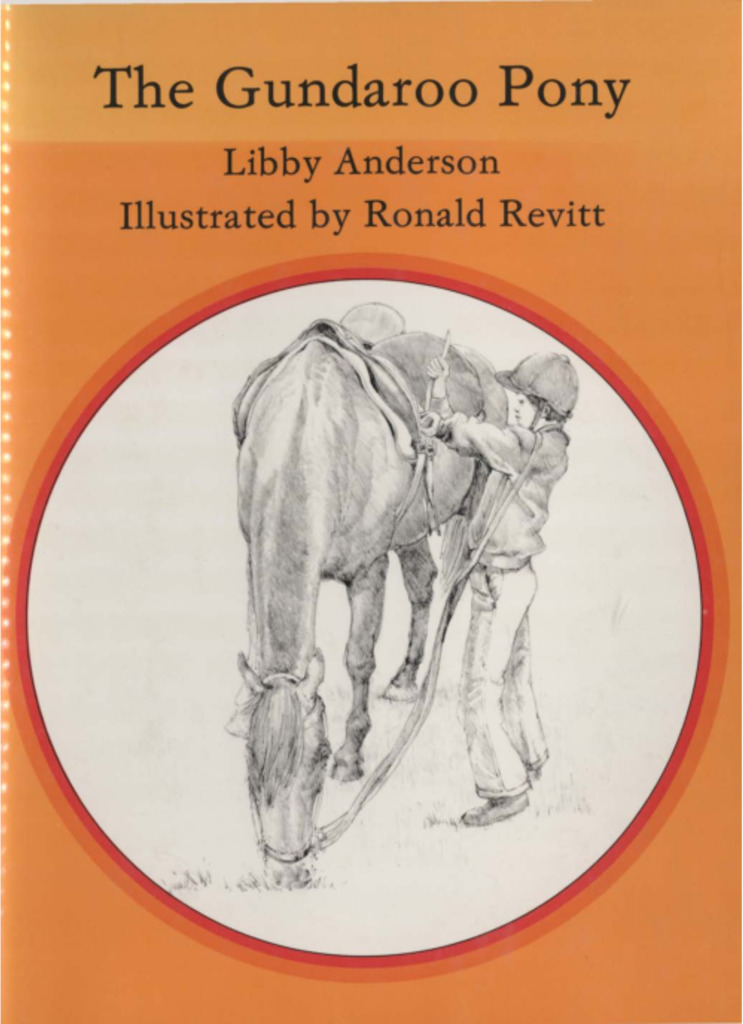
The Gundaroo pony »
Publication date: 1979
This is the story of a little girl and her pony. Dianne lives with her parents in the historic village of Gundaroo. One Christmas they called her outside and there was a little grey pony. Dianne could not think of a name that suited him, so she called him No Name. Dianne soon learned to saddle and bridle him herself and they had many happy rides together. One day Dianne came back from school very excited. There was going to be an historical picnic and all the children were going, dressed in period costume. This book tells of the costume Dianne chose to go in, and how No Name took part in the picnic too, and got a new name: Gundaroo Pony.
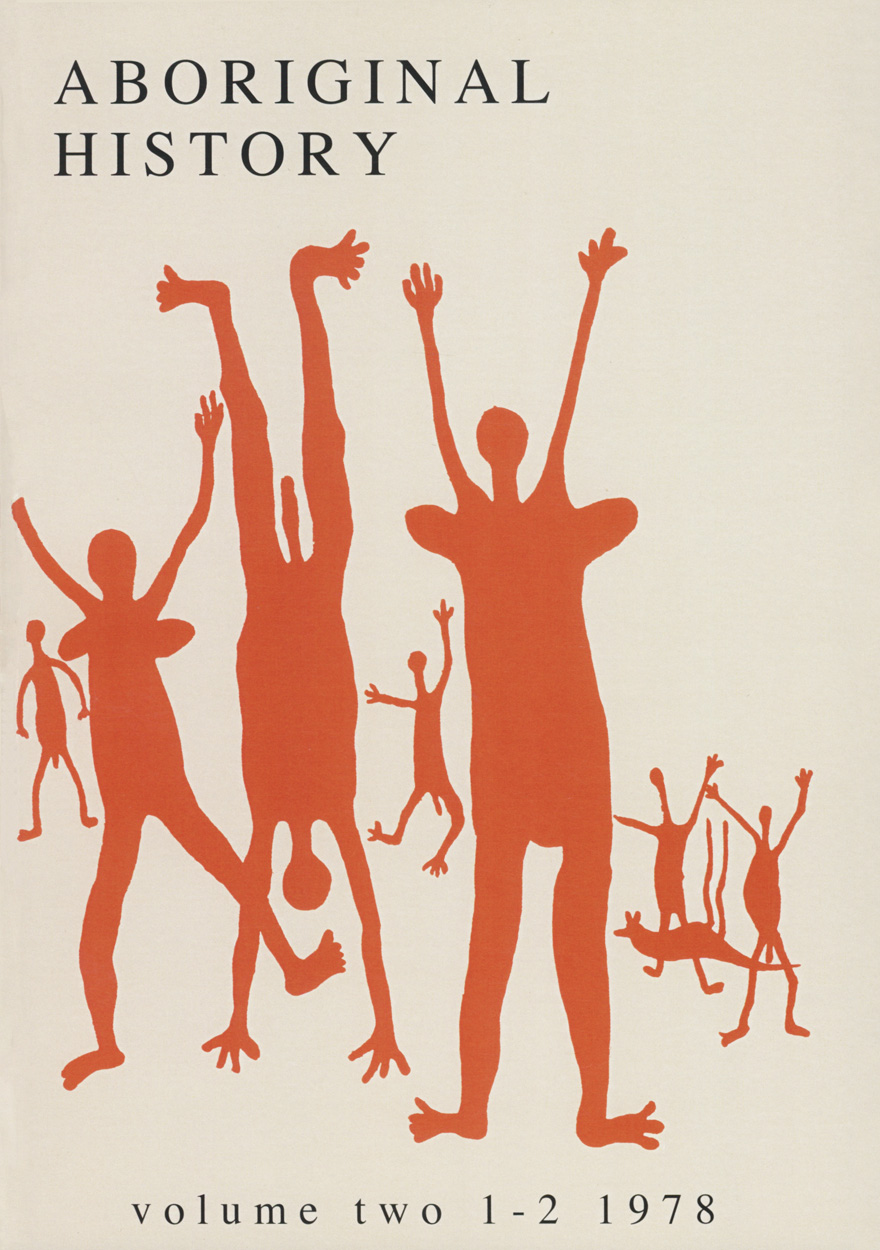
Aboriginal History Journal: Volume 2 »
Publication date: 1978
Since 1977, the journal Aboriginal History has pioneered interdisciplinary historical studies of Australian Aboriginal people’s and Torres Strait Islander’s interactions with non-Indigenous peoples. It has promoted publication of Indigenous oral traditions, biographies, languages, archival and bibliographic guides, previously unpublished manuscript accounts, critiques of current events, and research and reviews in the fields of anthropology, archaeology, sociology, linguistics, demography, law, geography and cultural, political and economic history.
Aboriginal History Inc. is a publishing organisation based in the Australian Centre for Indigenous History, Research School of Social Sciences, The Australian National University, Canberra.
For more information on Aboriginal History Inc. please visit aboriginalhistory.org.au.
Download for free
Not available for purchase
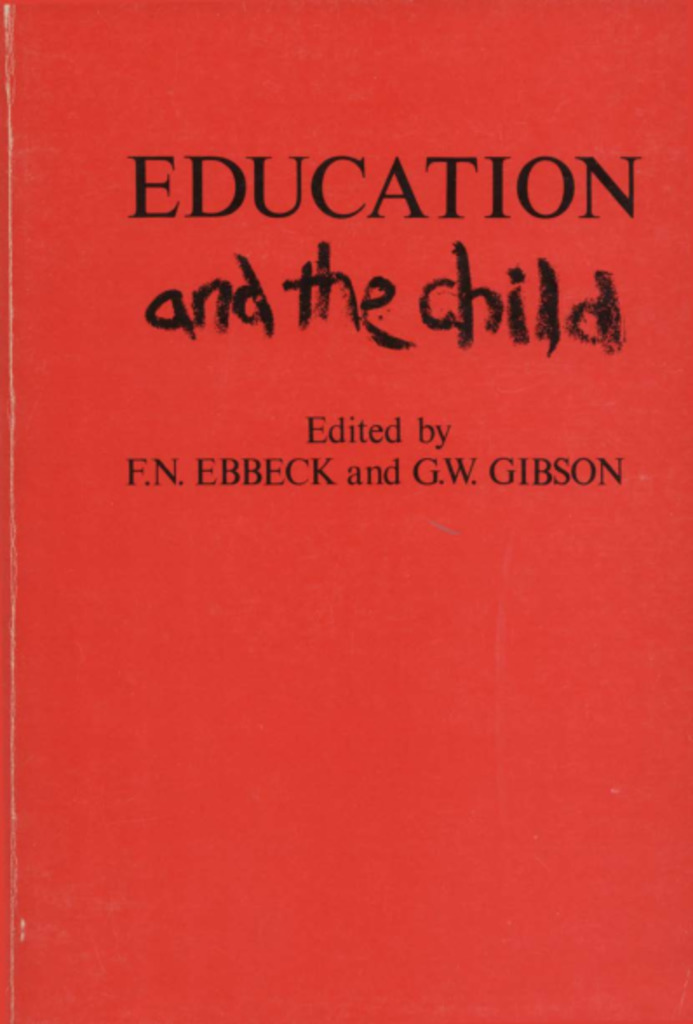
Education and the child »
Publication date: 1978
Published Press Archives http://press.anu.edu.au/node/3775 1885_114819.jpg ANU Press Education and the child Friday, 18 August, 1978 Not available Archive Scholarly Information Services
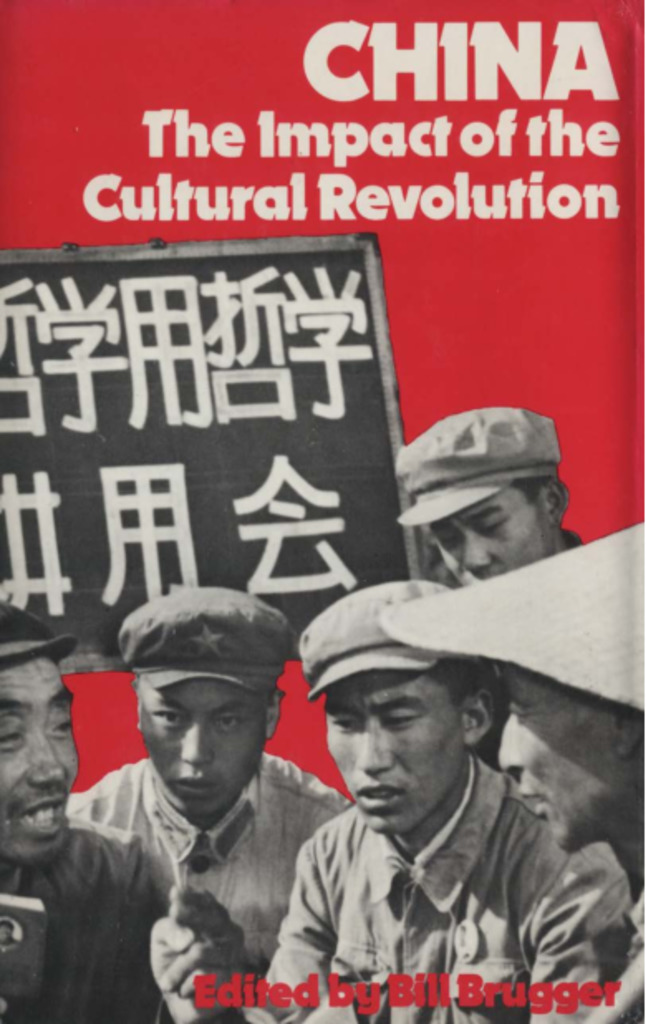
China: the impact of the cultural revolution »
Publication date: 1978
The period between the Ninth and Tenth Congresses of the CCP was one of immense and far-reaching changes within China. This book analyses these processes of change and assesses their significance. The Introduction and Conclusion locate the period within the framework of Mao Tsetung's theory of class struggle in socialist society. Individual chapters deal with the reconstruction of the Chinese Communist Party, the role of the People's Liberation Army, the debate concerning higher education, economic development, controversies over agricultural policy, the regularisation of industrial management, and foreign policy. The analysis of this period permits a longer- term perspective for the consideration of many of the vital issues raised by the Cultural Revolution, and this is a central concern of all contributions. It also provides an indispensable basis for the understanding of more recent events in China. The individual authors differ in their evaluations of the success of the Cultural Revolution and the implications of the consolidation policies persued after 1970. But, together, they offer a challenge to the conventional wisdom of both liberal orthodoxy and radical naivete.
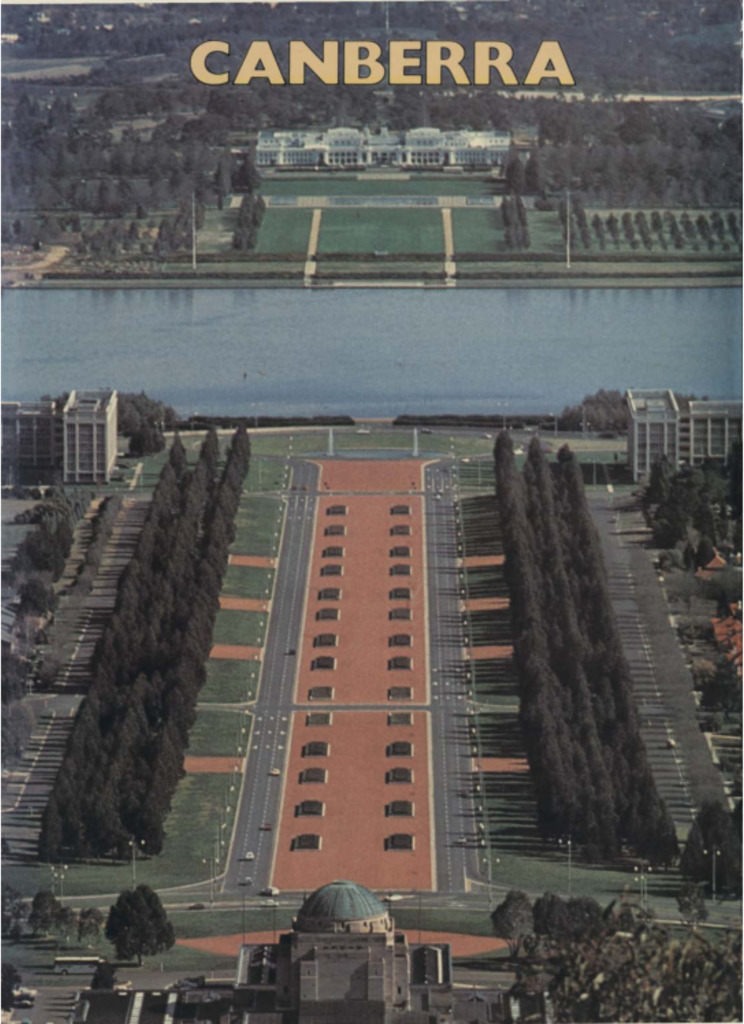
Canberra »
Publication date: 1978
Canberra is recognised as one of the world's most successful examples of planned city development. In sixty years it has grown from a collection of surveyors' tents to Australia's largest inland city. Because it has developed so rapidly most of Canberra's 200,000 citizens were born elsewhere. This book attempts to capture some aspects of life in Canberra - the buildings, the seasons, people at work and play, the countryside - so that residents of the national capital can give an impression of its moods and lifestyle to relatives and friends far away.
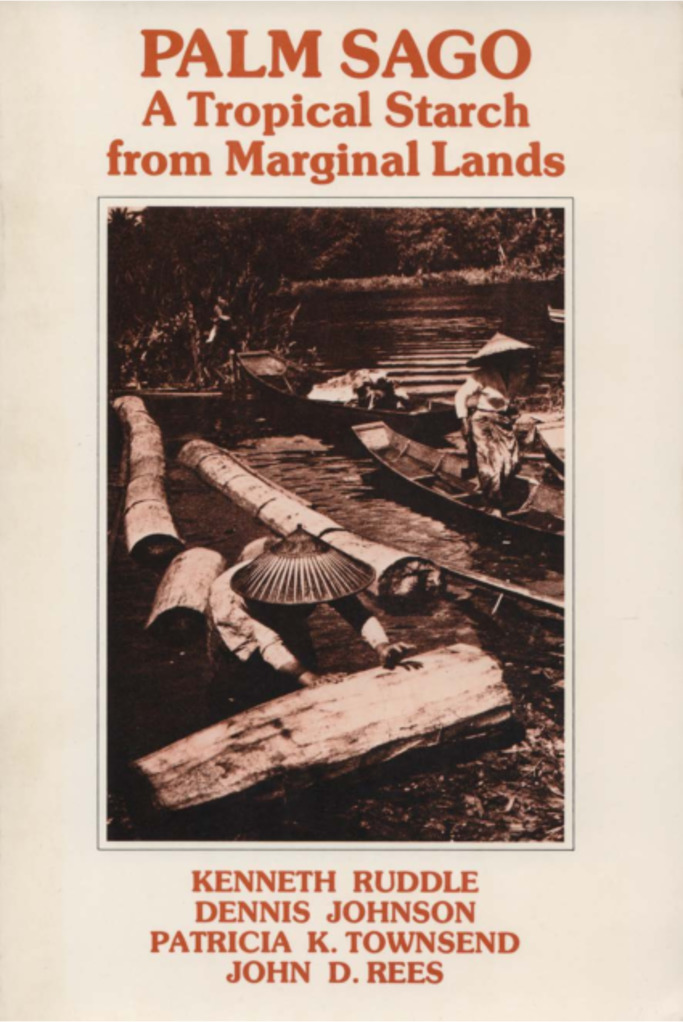
Palm sago: a tropical starch from marginal lands »
Publication date: 1978
This book takes a multidisciplinary and multicultural approach to studying the relationship between human societies and food- yielding tropical palms. A joint effort of four people whose special ties complement each other, it provides a broad and thorough examination of palm sago, a starch that has potential for small-scale, low-cost development in marginal areas of the tropics. Information on the extraction and production of palm sago in insular and mainland Southeast Asia, the tropical Americas, Melanesia, South China, and South Asia is presented here. More than an ethnobotanical monograph, this study places palm sago and its use within the relevant historical, technological, nutritional, commercial, and ritual context. Well-illustrated and drawing together a broad spectrum of information, this study provides the depth of knowledge of man/plant relationship needed to plan the rational development of tropical swamp environments. Academics and professionals in many fields will find this book of interest.
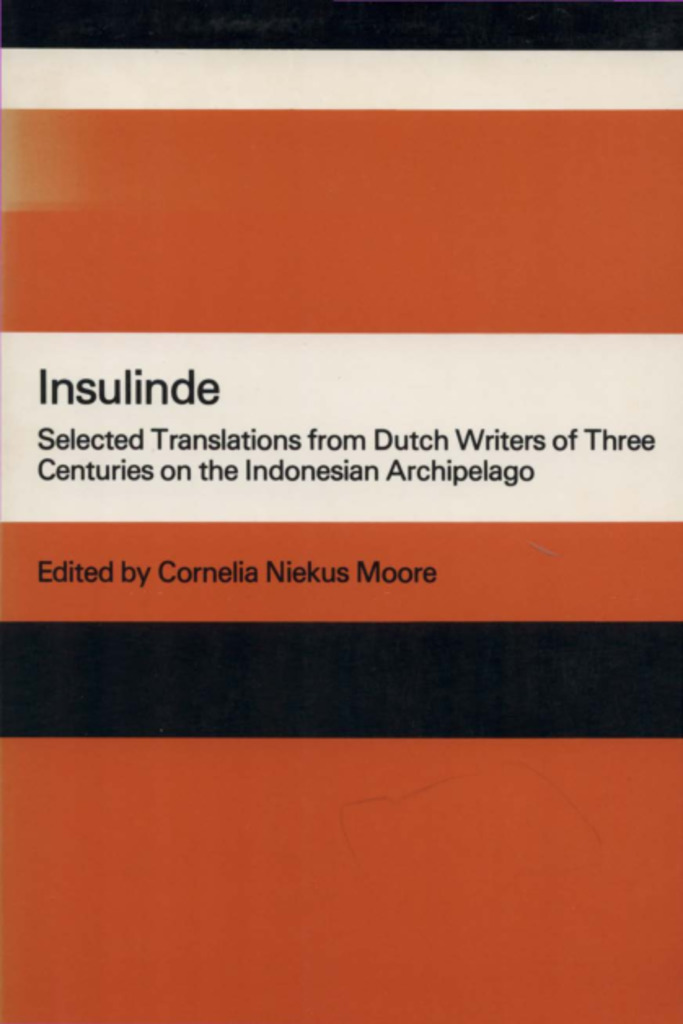
Insulinde: selected translations from Dutch writers of three centuries on the Indonesian archipelago »
Publication date: 1978
Published Press Archives http://press.anu.edu.au/node/3693 1885_115052.jpg ANU Press Insulinde: selected translations from Dutch writers of three centuries on the Indonesian archipelago Friday, 18 August, 1978 Not available Archive Scholarly Information Services
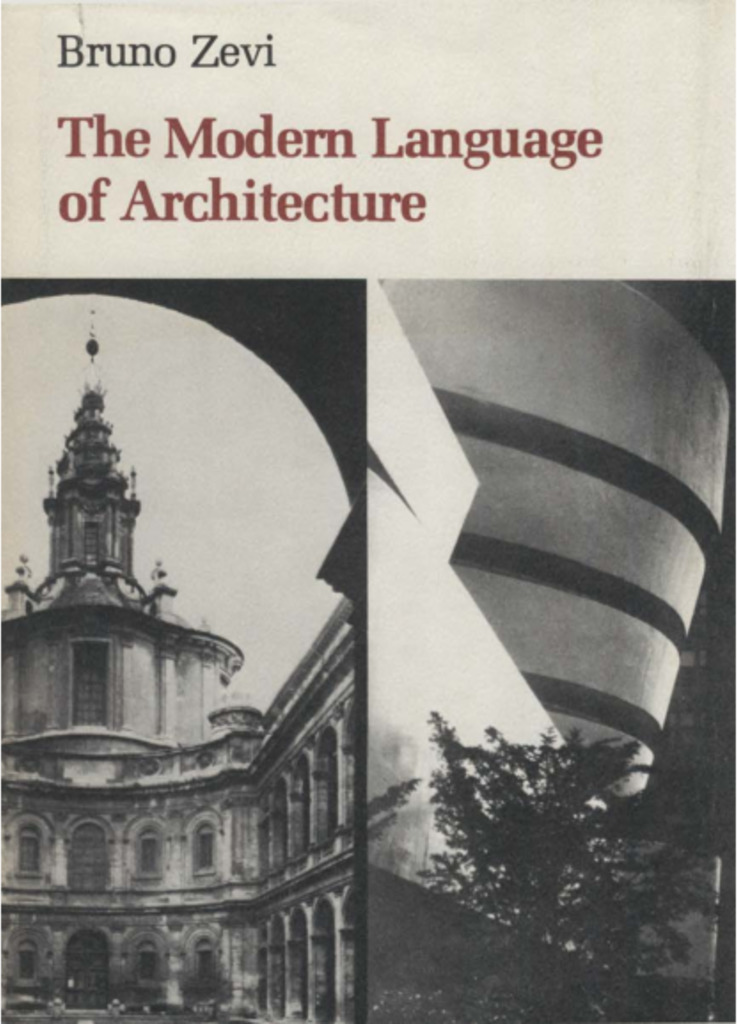
The modern language of architecture »
Publication date: 1978
"These pages" writes Bruno Zevi, "have the same goal as any other heretical act: to arouse dissent. If they provoke argument, they will have achieved their aim. Instead of talking endlessly about architecture, we shall finally begin to speak architecture." The Modern Language of Architecture by Bruno Zevi, whom Frank Lloyd Wright called "the most penetrating architectural critic of our time," should be read by anyone with an interest in designing, constructing, buying, selling, looking at, or living in a building. Setting forth seven principles, or "antirules," Zevi attempts, in the first part, to codify the new language of architecture that was created by Le Corbusier, Gropius, Mies van der Rohe, and Wright. In place of the classical language formulated by the Beaux-Arts school, with its focus on abstract principles of order, proportion, and symmetry, he presents an alternative system of communication characterized by a free interpretation of contents and function, an emphasis on differentiation and dissonance, a dynamic multidimensional vision, an independent interplay of elements, an organic marriage between engineering and architecture, living spaces designed to be used, and an inte gration of every building into its surroundings. Part 2, tracing the dialogue between architecture and historiography, demonstrates that the modern language of architecture is not the language of modern architecture, but the real system of communication of all creative architecture. A survey of the literature of the past century on architecture from ancient Greece through the Baroque reveals that each historical contribution had two opposite effects: the negative one of stimulating a revival and the positive one of enriching the modern language of architecture. Thus we find striking analogies between Le Corbusier and Greek town planning, Louis Kahn and Roman architecture of the age of Hadrian, the Arts and Crafts movement and medieval idioms, and, most notably, the two spirals of Borromini's church of Sant'Ivo alia Sapienza in Rome and Frank Lloyd Wright's Guggenheim Museum in New York.
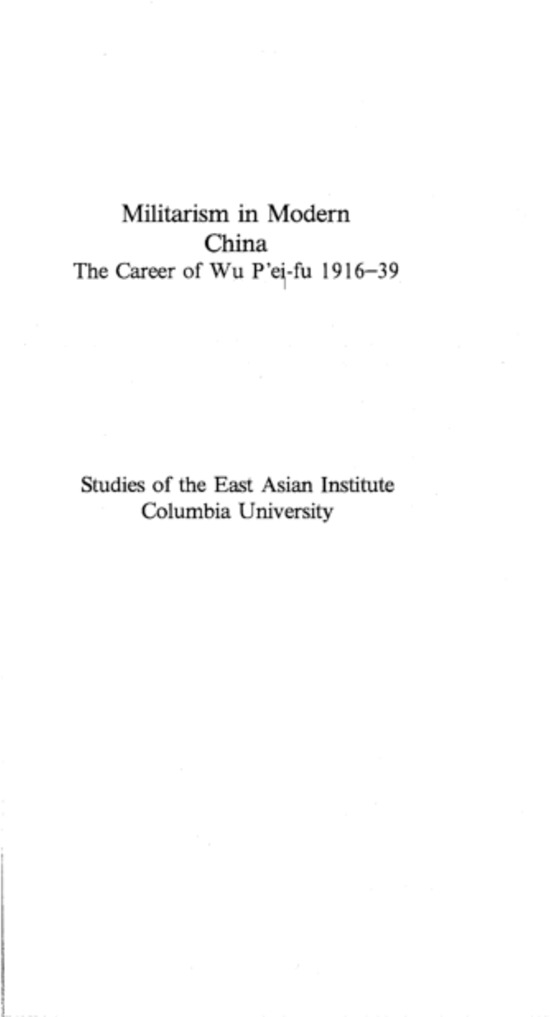
Militarism in modern China: the career of Wu P'ei-Fu, 1916-39 »
Publication date: 1978
Published Press Archives http://press.anu.edu.au/node/3707 1885_115187.jpg ANU Press Militarism in modern China: the career of Wu P'ei-Fu, 1916-39 Friday, 18 August, 1978 Not available Archive Scholarly Information Services Wou, Odoric Ying-Kwong
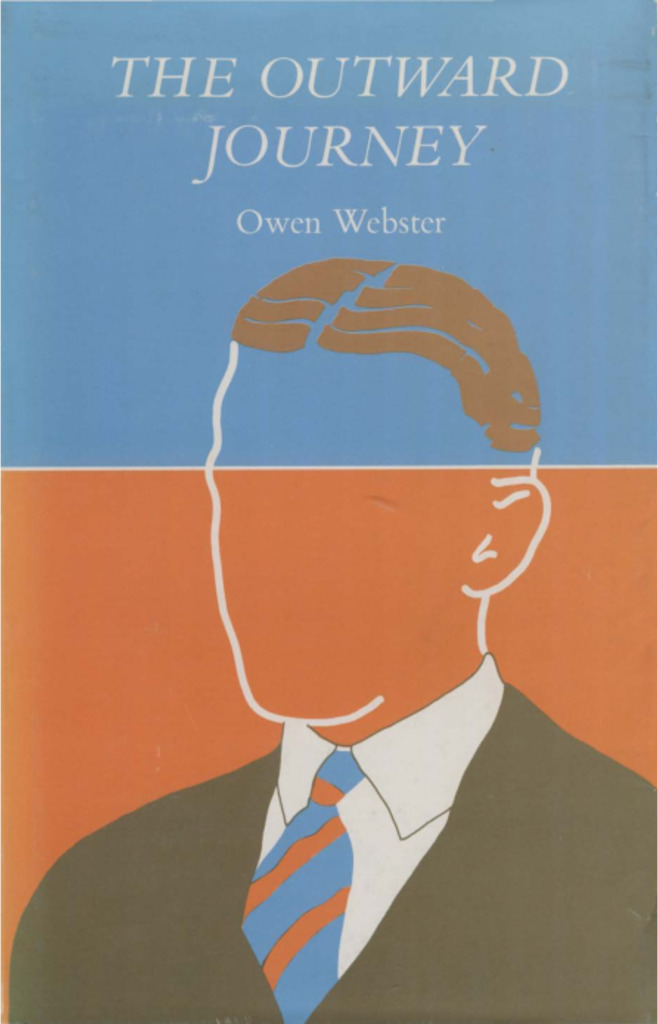
The Outward journey »
Publication date: 1978
Owen Webster described The Outward Journey, the first part of his unfinished biography of Frank Dalby Davison, as a 'non-fiction novel'. In writing it he combined the talents of a creative biographer with those of a social historian and literary critic. The Outward Journey is the story of a writer's development, beginning with a vivid evocation of the personalities surrounding Davison in his childhood and going on to trace the early experiences which were to influence his major works. This story is complemented by the author's comprehensive analysis of Davison's earliest works and by some rare insights into the lives of working class Australians from the migrations of the gold rush era to the years immediately after the first world war.
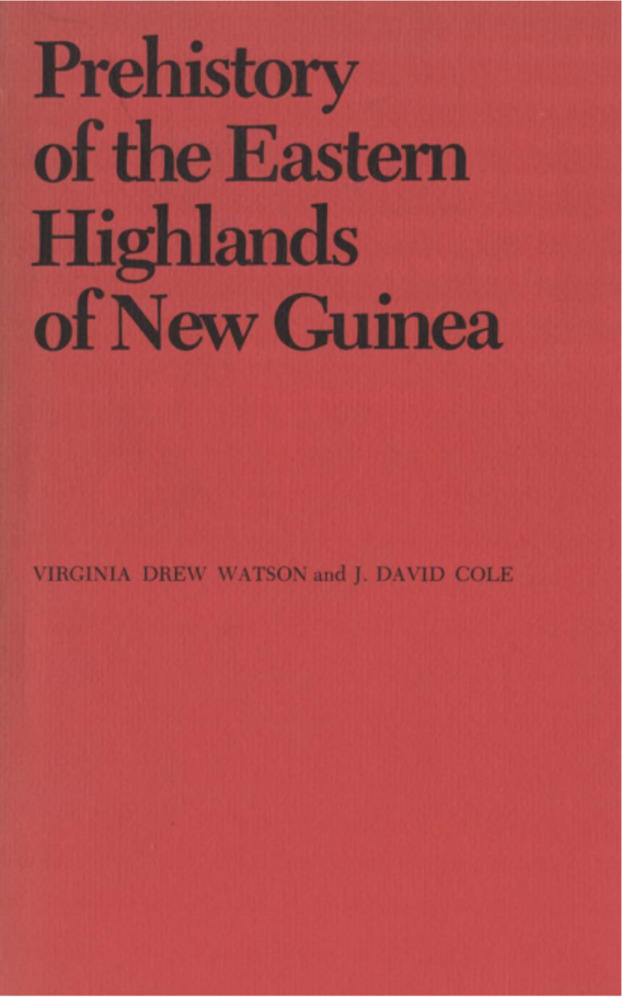
Prehistory of the eastern highlands of New Guinea »
Publication date: 1978
This volume examines the prehistory of the Eastern Highlands of New Guinea through a study of its archeology. Working from artifacts collected from seventy-six sites by J. David Cole, Virginia Watson has constructed a paradigmatic classification of stone tools which has the potential of greater elaboration and wider application in New Guinea. The classification represents a distinct departure from most previous attempts to interpret stone tools and carries to a more productive conclusion a line of investi gation that is similar to J. Peter White{u2019}s pioneer ing analysis of "altered edges." Using the data from similarity coefficients, frequency seriation, stratigraphy, and radiocarbon analysis, Watson has established a chronology of three phases which spans the period from 18,000 B.P. to the present, from hunting and gathering to a largely horticultural existence. The findings are also compared with those from five other sites excavated in the Eastern Highlands, and similarities and differences are assessed. Finally, an attempt is made to relate the archeological data, especially those from the latest phase, to groups of New Guineans currently living in the area, who have been the subject of intensive study.
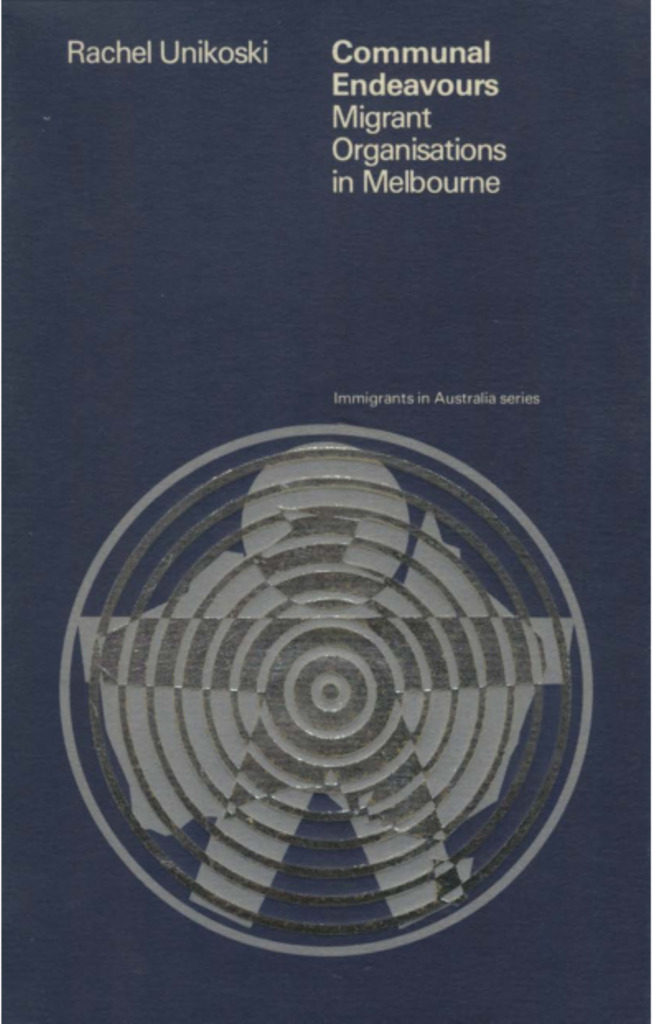
Communal endeavours: migrant organisations in Melbourne »
Publication date: 1978
Migrant organisations supply more than mere support for in dividual immigrants. They enable those who so wish to preserve something of the life, language and culture of the home country. The three groups of migrant or ganisations studied here - Polish, Dutch and Maltese - differ widely in their aims and success. The Polish migrant organisations in Melbourne are mainly intent on preserving Polishness, not only among those who migrated here from Poland but also in the younger generations who were small children when their parents came to Australia or who were born here. The Dutch have little wish to retain association with the Netherlands. Most speak English and membership of their organisations includes many Australians and other nationali ties. The most disorganised are the Maltese. They have a multi plicity of migrant bodies, most of them competing with each other, and little corporate feeling. Mrs Unikoski, herself a migrant from Belgium, had long been conscious of the relation be tween organised groupings and the individual stranded in alien ness, of the inability of some adults to alter inbred behaviour patterns and of a covert hostility of some Australians to ethnic organisations. Before writing this book she talked with many hun dreds of migrants from the three groups studied and was allowed to attend meetings of the of ficials who run the migrant or ganisations. The result is a book which shows her understanding of the problems encountered both by adults who find them selves in a strange country where customs are different and by children and adolescents who are torn between two cultures.
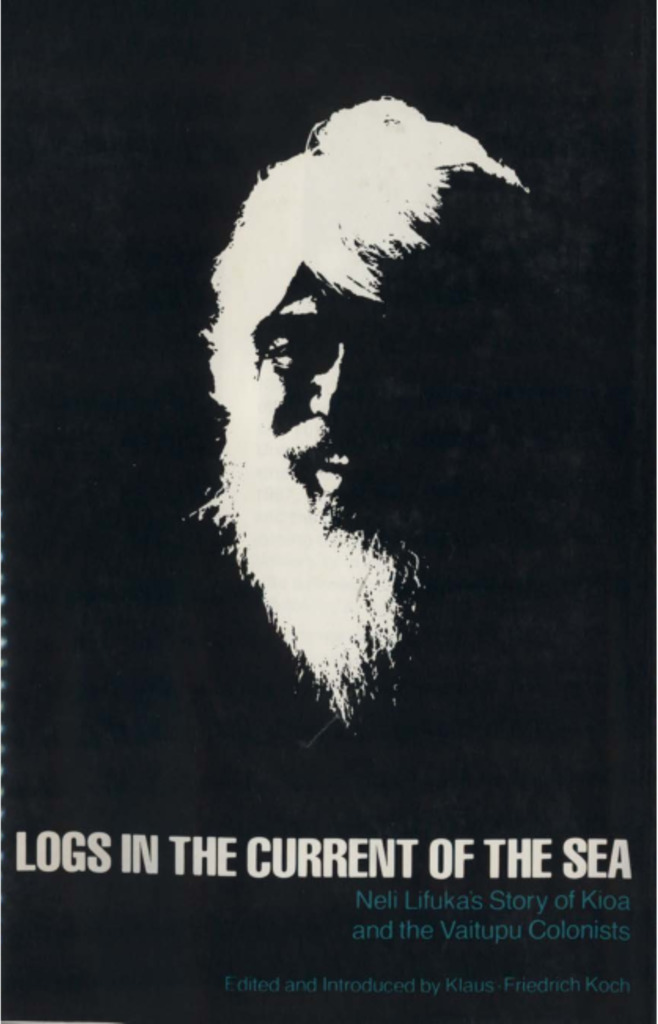
Logs in the current of the sea: Neli Lifuka's story of Kioa and the Vaitupu colonists »
Publication date: 1978
"People without a leader are like logs in the current of the sea; they don't know where to go." Neli Lifuka is totally candid and colorful as he describes his conventional childhood on Vaitupu in the Territory of Tuvalu (until 1975 the Ellice Island Group), his early education and travels, his first job as an engine-room hand on a phosphate cargo ship, his experiences with American marines in World War II, and his crucial role in the unprecedented purchase of Kioa Island (just off Fiji) in 1946. Klaus-Friedrich Koch visited Kioa for the first time 20 years later. Fascinated by the story of Old Man Neli's adventures and the difficulties encountered in the settlement of Kioa by the Vaitupuan colonists, he arranged to return as soon as he could with a notebook and recording equipment. This book is an edited transcript of Neli{u2019}s autobiography, supplemented by an introduction and a legal analysis of the conflict between Polynesian customs and British colonialadministrative law which bewildered Vaitupu and Kioa for a great many years. Professor H.E. Maude has written the foreword to this unusual chapter in Pacific history. Distinguished as historian and administrator, Professor Maude was Resident Commissioner in charge of the Gilbert and Ellice Islands Colony at the time of the Kioa purchase.
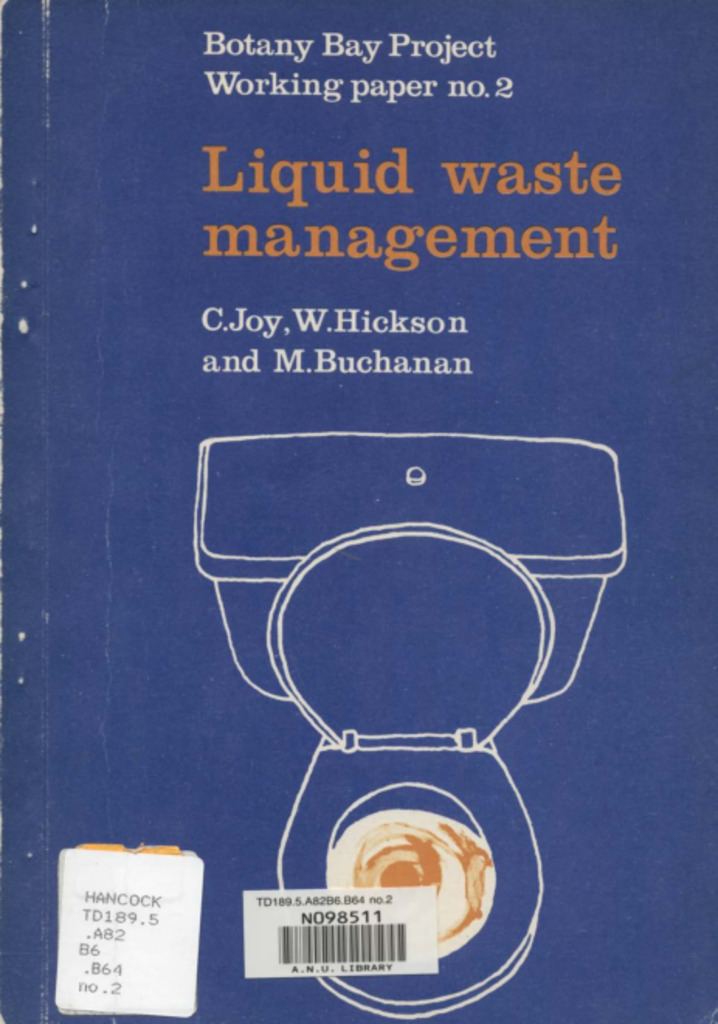
Liquid waste management »
Publication date: 1978
Published Press Archives http://press.anu.edu.au/node/3269 1885_114976.jpg ANU Press Liquid waste management Friday, 18 August, 1978 Not available Archive Scholarly Information Services Joy, C
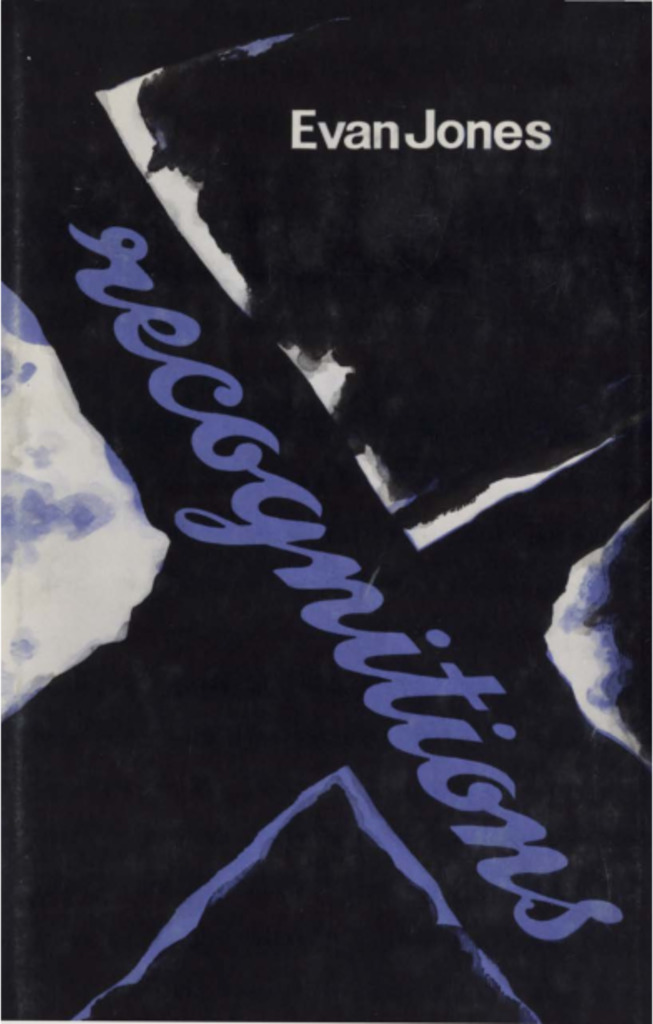
Recognitions »
Publication date: 1978
The prevailing mood of this, Evan Jones{u2019}s third collection of poetry, is gently plangent, wry, ruminative, and low key. He writes, in a style that is plain, transparent and conversational, and tempered with a nicely ingenious wit, poems that are beautifully made and will delight discriminating readers.
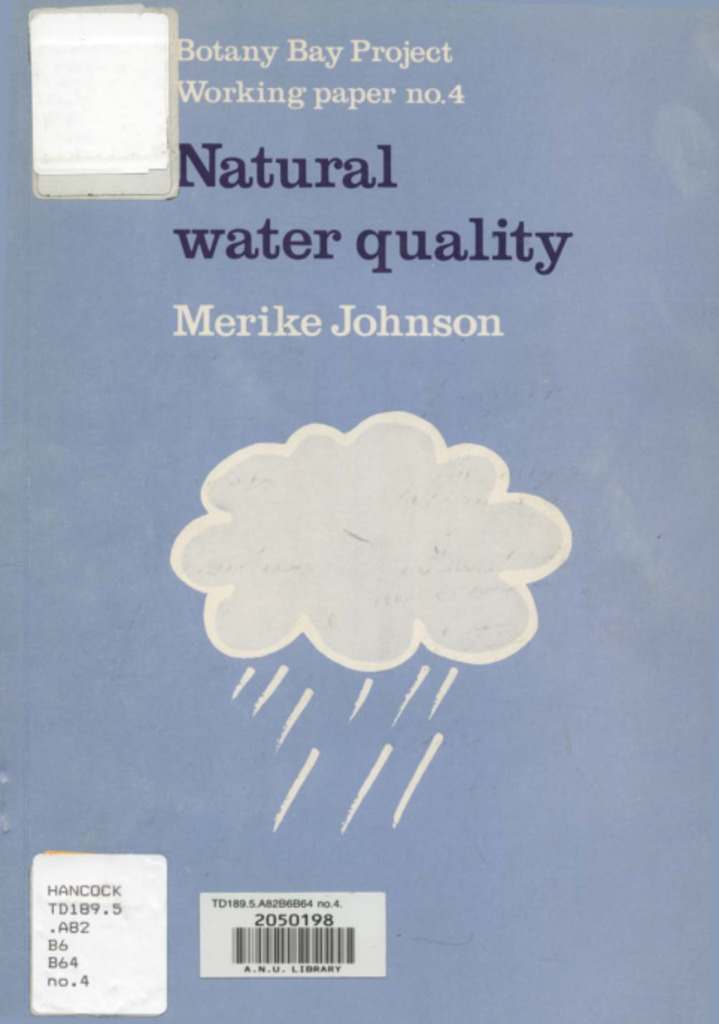
Natural water quality »
Publication date: 1978
Published Press Archives http://press.anu.edu.au/node/3557 1885_114748.jpg ANU Press Natural water quality Friday, 18 August, 1978 Not available Archive Scholarly Information Services Johnson, Merike
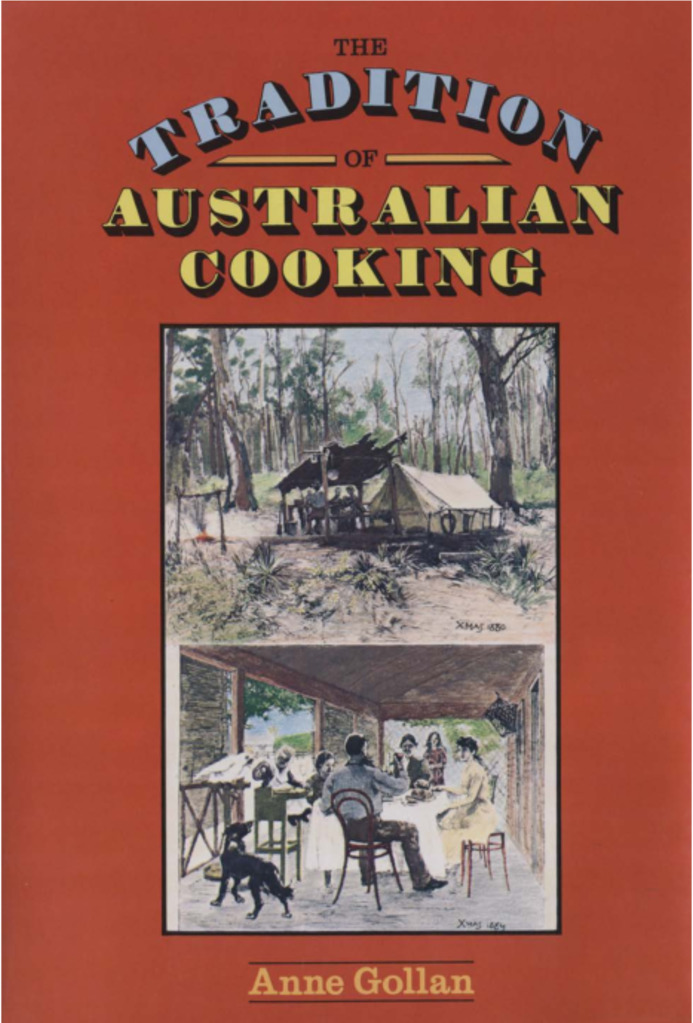
The tradition of Australian cooking »
Publication date: 1978
This book examines the cooking methods and household gadgetry of Australia{u2019}s past. Its span and documentation make it by far the most comprehensive essay to date on the subject. Beginning with the food and cooking techniques of the tribal Aborigines, and of those Europeans for whom the campfire was the kitchen, the author moves on to the days of outhouse kitchens and shortages of ingredients, the industrial awakening and the first influx of gadgets, the revolution in the kitchen caused by gas and electricity, and the postwar flood of packageci and processed foods, together with the recent interest in natural foods which counteracts this trend. There is a liberal larding of recipes and illustrations at every stage of the argument, while an occasional comment on broader aspects of Australian society supplies a touch of spice and the flavour of humanity. This book will be valued, read and used by serious students of Australian food, by those who would enjoy an historical glance at Australian society, past and present, through its kitchen activities, and by the frankly nostalgic seeking to re-create childhood culinary memories.



